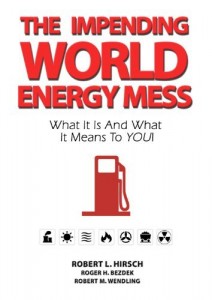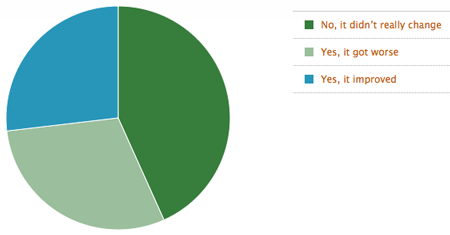According to a new article published by a team of researchers from CalTech and the Swiss Federal Institute of Technology there may be a new way to harness the energy of solar even when the sun is not shining. Led by Sossina Haile, she along with her colleagues are looking at ways to produce hydrogen and syngasses by using solar funnels.
In an article, “High-Flux Solar-Driven Thermochemical Dissociation of CO2 and H2O Using Nonstoichiometric Ceria,” published in the December 24, 2010 edition of Science magazine, the research team has developed a device that is able concentrate solar radiation and heat it up to 1,600 degrees Celsius. In simple terms, the heat that results from this process is then used to split water or carbon dioxide into hydrogen.
 As described in an article in Clean Energy Authority.com, the device consists of a quartz lens that focuses the solar radiation on a reaction chamber that is internally reflective and captures most of the photons that enter and converts them to heat. The device heats up at a rate of 140 degrees Celsius a minute until it reaches about 1,250 degrees Celsius, and stabilizing at more than 1,400 degrees Celsius. Through a two-step process, the device’s catalyst ceria (cerium dioxide) converts CO2 or water into its constituent elements.
As described in an article in Clean Energy Authority.com, the device consists of a quartz lens that focuses the solar radiation on a reaction chamber that is internally reflective and captures most of the photons that enter and converts them to heat. The device heats up at a rate of 140 degrees Celsius a minute until it reaches about 1,250 degrees Celsius, and stabilizing at more than 1,400 degrees Celsius. Through a two-step process, the device’s catalyst ceria (cerium dioxide) converts CO2 or water into its constituent elements.
Haile said in an interview, “Ceria is a metal oxide, what that material will do when heated is it will release oxygen.…It happens at high temperatures, when we cool it back down it wants to absorb oxygen. “The ceria replaces the oxygen by stripping it from the supplied material, carbon dioxide or water, thereby creating carbon monoxide—used for syngas, or hydrogen—which can be used directly. Either resulting fuel could be used to store the sun’s energy for use in power generation.”
The funnels can be small, but they’re not nano-sized. “It’s like a sponge it’s porous and the gasses flow through it,” Haile said. But “it’s not nano because these temperatures are too high for nano-structures.”
According to Haile, the funnels are not efficient enough for commercial use and to date, only convert around 0.7 percent to 0.8 percent of the solar energy in the funnel into fuel. With further research she hopes this will improve dramatically.
“We calculated efficiency should be between 15 percent and 19 percent. We’re working with University of Minnesota on that. Right now it’s limited by the thermal design of the reactor. We need a better thermal design,” Haile concluded.



 “Xylose is a wood sugar, a five-carbon sugar that is very abundant in lignocellulosic biomass but not in our food,” said Yong-Su Jin, a professor of food science and human nutrition at Illinois and a principal investigator on the study. “Most yeast cannot ferment xylose.” A big part of the problem with yeasts altered to take up xylose is that they will suck up all the glucose in a mixture before they will touch the xylose, Jin said. A glucose transporter on the surface of the yeast prefers to bind to glucose. “It’s like giving meat and broccoli to my kids,” he said. “They usually eat the meat first and the broccoli later.”
“Xylose is a wood sugar, a five-carbon sugar that is very abundant in lignocellulosic biomass but not in our food,” said Yong-Su Jin, a professor of food science and human nutrition at Illinois and a principal investigator on the study. “Most yeast cannot ferment xylose.” A big part of the problem with yeasts altered to take up xylose is that they will suck up all the glucose in a mixture before they will touch the xylose, Jin said. A glucose transporter on the surface of the yeast prefers to bind to glucose. “It’s like giving meat and broccoli to my kids,” he said. “They usually eat the meat first and the broccoli later.” It’s called the Load Toad™ and it was designed to allow rail cars to be packed more densely by forcing DDGS to the sides of the rail car, a process that is usually done by hand with a shovel. By distributing the DDGS load more evenly and efficiently, POET plants have been able to pack 3%-5% more DDGS into each car.
It’s called the Load Toad™ and it was designed to allow rail cars to be packed more densely by forcing DDGS to the sides of the rail car, a process that is usually done by hand with a shovel. By distributing the DDGS load more evenly and efficiently, POET plants have been able to pack 3%-5% more DDGS into each car.

 Scaled up, VandenBrekel envisions a host of 1,000-to-20,000-acre farms across the Southeast where algal fuel is grown, processed and used locally, from community gas stations to diesel fleets such as school buses. Success, he says, would create no less than a “rebirth of American agriculture.”
Scaled up, VandenBrekel envisions a host of 1,000-to-20,000-acre farms across the Southeast where algal fuel is grown, processed and used locally, from community gas stations to diesel fleets such as school buses. Success, he says, would create no less than a “rebirth of American agriculture.”


